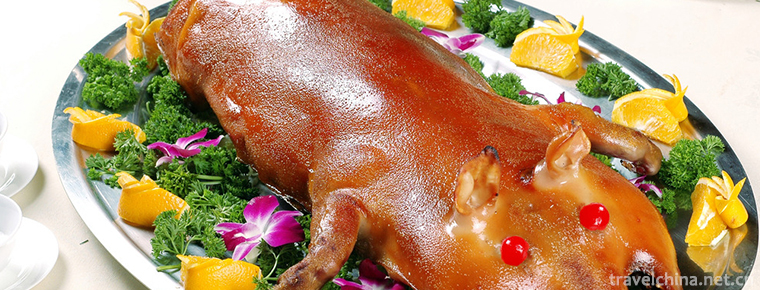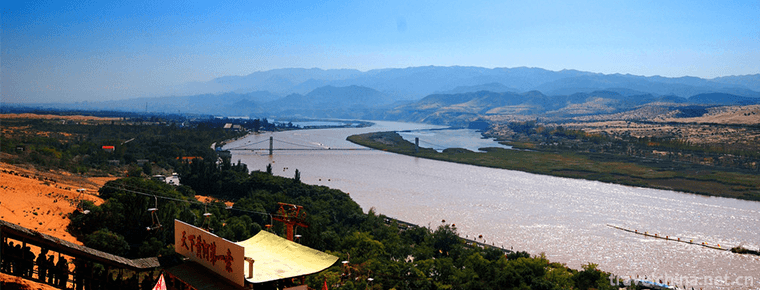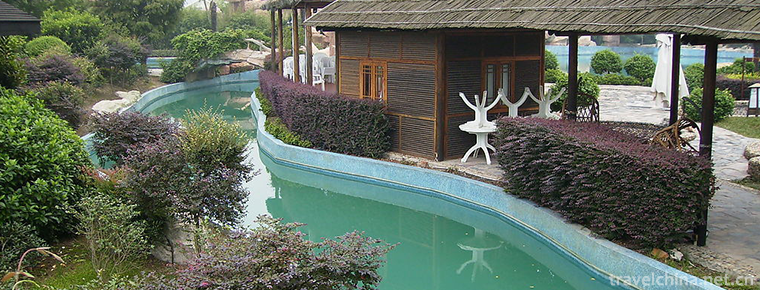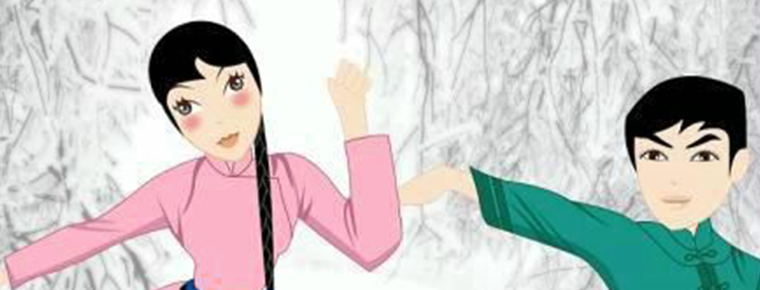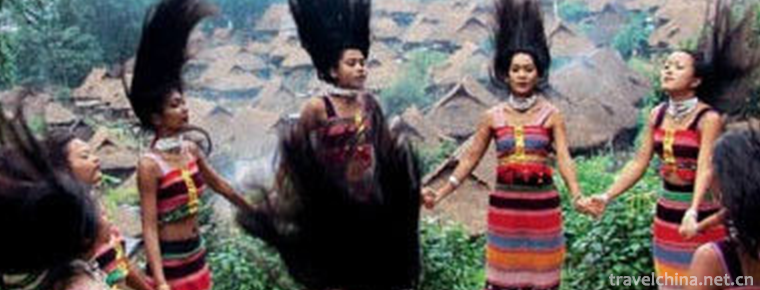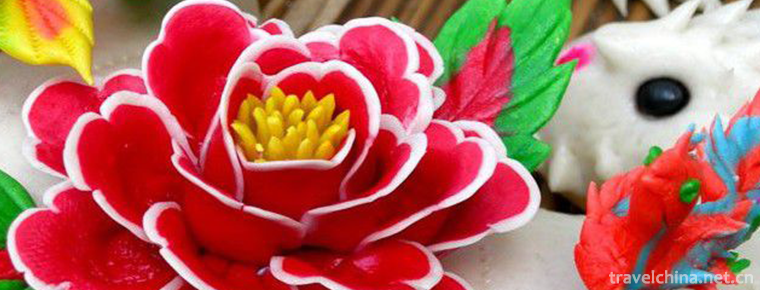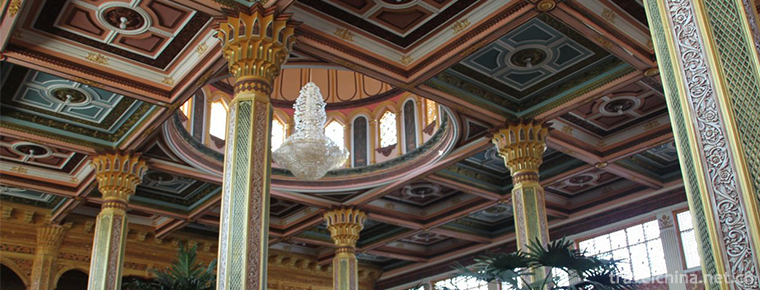Qingyang Opera
Qingyang Opera
Opera tune, also known as "Chizhou tune", is named for the production of Qingyang in Chizhou, Anhui Province.
During Jiajing period of Ming Dynasty, Yiyang Tune of Jiangxi flowed into Qingyang County of Chizhou Prefecture in Southern Anhui Province. It was combined with local language, folk opera (Kunshan Tune, Yuyao Tune, etc.), Jiuhua Mountain Buddhist folk rap, large-scale religious drama, "Mulian" and folk song minor tunes to produce Qingyang Tune. Qingyang cavity is an important kind of cavity after Yi-yang cavity. At the end of Ming Dynasty and the beginning of Qing Dynasty, Huizhou tune was popular, and it was called "Huichi elegant tune" together with Huizhou tune. It became the main tune in the whole country and declined at the end of Qing Dynasty.
Qingyang tune inherits the dry singing of Yiyang tune, and creates the singing form of "rolling tune" which combines the tune and rolling, and does not trust the string. Its section is drum, its tune is loud, and the characteristics of "one singer, one singer, one singer, one singer and one audience" are more enthusiastic and bold. The role system has seven roles: life, dan, net, end, ugliness, outside and pasting. Later, the roles of Xiao and Fu were added. His speeches focus on "Civil Opera and Martial Arts Singing". They are entertaining, interesting and lively. They often intersperse with performances such as channeling knife doors, pan hangers, turning elevated platforms and jumping rings. There are also various paper masks in Qingyang Opera, which are very distinctive in dancing beauty.
Qingyang Opera began in the Yuan and Ming Dynasties, and various literati legends of later generations are numerous, including Qingyang Opera, Qingkun Opera, Kunchi New Opera, Rolling Tune Yuefu, Qiyin Opera, Yugu New Spring Opera and Huichi Elegant Opera. Qingyang Opera extends from Southern Anhui to Fujian, Guangdong, Hunan, Jiangxi, Hubei, Shu, Jin and Lu, directly or indirectly affecting the formation and development of Hui Opera, Gan Opera, Sichuan Opera, Huangmei Opera and other types of opera, especially laying the foundation for the formation of Beijing Opera by the "four Hui Opera Classes". Qingyang Opera is known as the "originator" of Beijing Opera and occupies a prominent position in the history of Chinese opera.
On May 20, 2006, Qingyang Opera was listed in the first batch of national intangible cultural heritage list with the approval of the State Council.
Origin of Plays
Qingyang Tune was formed in Qingyang County, Chizhou City, Anhui Province. Because Qingyang is the capital of Chizhou, it is also called Chizhou Tune or Huichi Elegant Tune. It mainly exists in Qingyang County of Anhui Province and Hukou County of Jiangxi Province. During Jiajing period of Ming Dynasty, Yiyang tune flowed into Qingyang area, which was combined with local dialects and folk songs to form Qingyang tune. This new tune breaks through the music structure of the combination of opera and cards, develops the "roll tune", creates the singing form of the combination of tune and roll, and pushes the evolution of Chinese opera tune to a new height.
Qingyang Opera covers a wide range of subjects. As far as some of its components are concerned, its history can be traced back to the Song and Yuan Dynasties, or even further. In the Song Dynasty, Southern Opera appeared along the southeast coast and entered southern Anhui after entering Ming Dynasty. Its four major tunes, Haiyan, Yuyao, Yiyang and Kunshan, have been popular in Chizhou. However, among the four tunes of Nanxi Opera, Haiyan Tune and Kunshan Tune tend to be refined and elegant, which are appreciated by scholars and officials. Yuyao Tune and Yiyang Tune are popular and rough, and are loved by the working people. Qingyang Opera absorbs its essence, uses village songs, Lane ballads and "misuse local language and blend local tunes" to melt a variety of folk arts (such as Jiuhua folk songs, including Taoist Taoist ballads, monks playing "Yankou" music and dance) into one furnace. The repertoire is mainly adapted from the old Southern Opera texts and literary legends, and "change tunes to songs". When singing, the tone is high and the audience is in harmony. They play gongs and drums with extraordinary liveliness, which is especially popular with the common people. Not only is it widely sung in southern Anhui Province, "Haiyou four out", but it also spreads all over the world along with commercial and military routes, which has a positive impact on many local operas combined with Qingyang Opera.
Buddhist folk rap is one of the main components of Qingyang Opera. The location of Qingyang is superior and its landscape is beautiful. It is not only a battle between military strategists, but also a good place for Taoists and Buddhists to establish Taoism and spread Buddhism. The prosperity of religion is an extremely important factor in the emergence and development of Qingyang Opera. Especially religious sacrifices, Jiuhua Mountain Buddhist activities and the performance of Mulian Opera have promoted the development and dissemination of Qingyang Opera. According to expert textual research: Nanling and Qingyang Mulian Opera are ancient Qingyang Opera. "The Mulian Opera, with the ancient Qingyang Opera as its main singing voice, reflects the folk customs, living habits, religious beliefs and oral literature in the rural areas of southern Anhui Province." Because Mulian Opera is full of ghost and God images and religious content, its performance occasions have gradually expanded from simple worship of ghosts and gods to folk praying for blessings and disaster, exorcising epidemics and evading evil. Drama is an indispensable part of Buddhist activities. During the Jiaqing and Wanli years, when Buddhist activities in Jiuhua Mountain were most prosperous and prosperous, religious culture and Buddhist culture directly dominated the art of opera. Qingyang Opera is formed by melting Nanxi Opera Opera Opera Opera Opera Opera Opera Opera Opera Opera Opera Opera Opera Opera Opera Opera Opera Opera Opera Opera Opera Opera Opera Opera Opera Opera Opera Opera Opera Opera Opera Opera Opera Opera Opera Opera Opera
As a prominent new force in Southern Opera, Qingyang Opera flourished in the Ming and Qing Dynasties and lasted for more than 500 years. There are anthologies of Qingyang Opera scripts such as Qingyang Opera, Qingyang Opera, Qingkun Opera, Kunchi New Opera and Rongtiao Yuefu, which have been widely circulated. Qingyang Opera developed from Southern Anhui to Anqing, Jiangxi, Hubei, Sichuan and Hunan provinces. During the Wanli period of the Ming Dynasty, Qingyang Opera was popular all over the country, affecting the formation and development of Mulian Opera, Hui Opera, Huangmei Opera, Sichuan Opera, Gan Opera, Peking Opera and other operas.
At the end of Ming Dynasty and the beginning of Qing Dynasty, Qingyang Opera influenced many high-pitched singing methods all over the country. Yuexi Gaoqiang and Hukou Gaoqiang in Jiangxi are the vestiges of Qingyang Cavity. The singing tune of Mulian Opera is the ancient Qingyang Opera. At the same time, the performance of Mulian Opera also promotes the development and dissemination of Qingyang Opera.
Qingyang Opera nourished Huangmei Opera and Hui Opera. Huangmei Opera is a kind of opera art which combines Qingyang Opera with the development of Huangmei Tea-picking Opera and Hui Opera Opera in Hubei Province. During the Jiajing period of the Ming Dynasty, the Qingyang chamber of Chizhou and Huizhou rose and absorbed the essence of the tune of Anhui, Mu Lian and Kunshan. Because Qingyang tune is elegant and elegant, Chizhou and Huizhou are flourishing, it is also known as "Huichi elegant tune". Thus, Qingyang tune is a new tune of "fashion in the world". Therefore, Qingyang Opera is the predecessor of Hui Opera, and Hui Opera is the predecessor of Beijing Opera. It nourishes Huangmei Opera, the third generation of local operas, including Beijing Opera, Gan Opera, Hunan Opera, Sichuan Opera and other operas, which directly or indirectly absorbs the aria and uses its singing methods for reference, and has been enriched and developed. Therefore, Qingyang Opera is known as the "ancestor" of Beijing Opera. Qingyang Opera is also known as the living fossil of opera, which has made great contributions to the development of Chinese drama. However, due to wars, plagues and foreign cultural shocks and other reasons, the Qingyang Opera is declining. It has basically disappeared from the stage and is on the verge of extinction. It is in urgent need of rescue, protection and inheritance.
Drama protection
Expert Demonstration
According to textual research, the earliest attention to Qingyang Opera was paid to Fuyunzi (1902-1948), a Chinese dramatist living in Japan. He found well-preserved Qingyang Opera of Ming Dynasty, such as Cilin Yizhi, Yurong Xinhuang, and Huichi elegant tune engraved edition from the Japanese cabinet library. In 1942, the article "Shi Rong Diao" was published in the Oriental Journal, explaining the origin and artistic characteristics of Qingyang Opera, demonstrating the objective existence of Qingyang Opera with historical facts, thus opening the prelude of Qingyang Opera in China.
From 1940s to 1950s, Mr. Ye Dejun (1911-1956), a Chinese opera historian and theorist, published a series of textual research on the origin and characteristics of Qingyang Opera, which laid a good foundation for future generations to study Qingyang Opera.
Since 1950s, Mr. Liusha, then vice president of Jiangxi Gan Theater, and Mr. Wang Gulu, a Japanese opera writer, have made further detailed demonstrations of Qingyang Opera and Rongtune. Their research results are preserved in two works, Yihuang Zhuqiang Origin Exploration - Qing Dynasty Opera Research and Ming Dynasty Southern Opera Sound Origin Discrimination, which proves the existence and historical origin of Qingyang Opera.
From the 1970s to the 1980s, Mr. Qian Nanyang, an expert in Nanxi Opera, wrote An Introduction to Opera Literature. Anhui Huangmei Opera expert Lu Hongfei, class friend book and Wang Zhaoqian have made fruitful research on Huangmei Opera and its related Qingyang Opera. Their research results are mostly reflected in the collection of research papers on Qingyang Opera written by class friend book.
protective measures
Protection Activities in Qingyang County
In the mid-1980s, Qingyang County set up a folk culture and art collation organization, responsible for the investigation and collection of folk culture and art heritage, focusing on the collection of Qingyang tune and Qingyang folk songs.
In November 1985, Qingyang County set up a compilation organization of Qingyang Opera Records, and began to collect and sort out the historical materials of Qingyang Opera focusing on Qingyang Opera. In April 1991, a compilation of Qingyang Opera repertoires was jointly published by Anhui Art Research Institute, Anqing Huangmei Opera Research Institute, Chizhou Regional Cultural Bureau and Qingyang County Cultural Bureau. Ninety-four large and small Qingyang Opera repertoires were collected. On May 3, 1992, the National Academic Seminar on Qingyang Opera was held in Qingyang, which was jointly organized by the Institute of Traditional Opera, the Anhui Institute of Art, the Chizhou Regional Cultural Bureau and the Qingyang County People's Government. Experts and scholars attended the seminar exchanged 24 academic papers and published them in the form of "New Views on Ancient Opera". In October 1998, Qingyang County actively organized and staged the newly edited Qingyang Opera "Moon Bridge" in Chizhou Branch of the Second Anhui Art Festival, which won many awards.
Since 2003, the Qingyang Opera Art Gallery and Qingyang Opera Troupe in Qingyang County have been established successively to support the farmer troupe in Changlong Village of Qingyang Opera. On May 20, 2006, Qingyang Opera was listed in the first batch of national intangible cultural heritage list with the approval of the State Council. Since 2009, Qingyang Opera Museum, Qingyang Opera Heritage Museum and Xinsheng Qingyang Opera Art Troupe have been established in Qingyang County. Since the 1990s, Huangmei Drama Troupe and cultural museum professionals have gone deep into Qingyang, Hukou and other places to dig and rehearse the traditional Qingyang Opera repertoire, more than a dozen small plays such as "Moon Bye", "Moon Bridge", "Food Delivery and Chopping E" have performed more than 5,000 times throughout the city. A group of young actors, such as Li Dacheng, Wang Linghua, Chen Qi and Yang Mansheng, have actively participated in popularizing the Qingyang Opera.
Protection Activities in Hukou County
As early as 1956, Huang Zhigang and Wu Jianlun, the famous experts in the history of drama in China, unexpectedly discovered the Qingyang Opera of the Ming Dynasty in Hukou, but they did not conduct in-depth study of the Qingyang Opera in Hukou at that time.
At the end of 1982, Liu Chunjiang, then curator of Hukou County Cultural Museum, went to Wenqiao Township for inspection, and unexpectedly discovered that Qingyang Opera was performed by the local people. In the following 20 years, Liu Chunjiang collected 131 handwritten repertoires, 448 operas, 64 single-fold and miscellaneous operas, more than 50 musical materials, more than 110 hours of audio-visual materials, amateur operas and various kinds of Qingyang Opera. There are more than 1000 kinds of data and 46 faces of Qingyang Opera. At the same time, we also collected many valuable first-hand materials, such as the ancient genealogy of Qingyang Opera, Banshe, ancient stage, couplets and artists'wall inscriptions. This not only surpasses the Qingyang Opera data of Qingyang County, but also preserves the most complete Qingyang Opera data in the whole country and even in the whole world.
In 1988, Hukou set up 48 Qingyang Opera Troupes successively, performing dozens of whole plays such as Three Kingdoms Opera, Water Margin Opera, Yuefei Opera and Mulian Opera. At the same time, it also adapted the traditional Qingyang Opera repertoire "Hundred Flowers Give Swords", "Moon Bridge" and the new edition of modern Qingyang Opera "A Basket of Shoutao", "All the Mishaps Caused by Mahjong", "Pohu Love Song" and so on. In 1999, Hukou County was awarded "Township of Opera" by the Provincial Department of Culture. In 2000 and 2008, the Ministry of Culture awarded Hukou "Township of Chinese Folk Art (Opera) twice. In 2005, the first Qingyang Opera Art TV feature film "The Fair Singing of Poyang Lake" won the third prize in the selection of the second Chinese TV drama "Orchid Award". In June 2006, Qingyangqiang (Gaoqiang) in Hukou County was listed in the first national intangible cultural heritage list. In 2007, on the second "Cultural Heritage Day", Jiujiang College and Hukou County People's Government formally signed a cooperation agreement on the protection and inheritance of Qingyang Opera Culture, and established a "Qingyang Opera Art Center" to establish a "Qingyang Opera Practice Teaching Base" in Fulong Township, Hukou. In 2007, Hukou Qingyang Opera, co-authored by Liu Chunjiang and Chen Jianjun, was published.


-
Gold medal suckling pig
Roasted Suckling Pig. Characteristic: It has won the "Golden Ding Award" by the national commercial department. It is a precious Cantonese dish at the banquet..
Views: 223 Time 2018-11-14 -
Dunhua Liudingshan Cultural Tourist Area
Dunhua Liudingshan Cultural Tourist Area is located in the South Bank of Mudanjiang River, 3 kilometers south suburb of Dunhua City.
Views: 147 Time 2018-12-05 -
Scenic Spot of the Source of the Yellow River
Kariqu, one of the sources of the Yellow River, started with five springs, and Maqu, the other with only one springs. This is the source area of the Yellow River. Tourists here can't imagine that the .
Views: 175 Time 2019-01-18 -
Golden Peacock Hot Spring Resort
Anhui Jinpeacock Hot Spring Resort is a commercial resort hotel which integrates vacation, fitness, leisure, entertainment, catering and accommodation. It covers an area .
Views: 128 Time 2019-01-26 -
Xiling mountain song
Xiling Mountain Song is a national intangible cultural heritage with a long history, primitive simplicity and smooth melody. Its color and mode contain some elements of Tibetan, Qiang and Han folk son.
Views: 350 Time 2019-04-19 -
Alpine Hand in Hand Dance
"Hand-in-hand dance" is a kind of self-entertainment dance with the longest history and widespread spread spread among the folk dances of the mountain nationality. During the wedding and fes.
Views: 97 Time 2019-04-30 -
Jingzhou Huagu Opera
Jingzhou Huagu Opera, a local traditional drama in Hubei Province, is one of the national intangible cultural heritage..
Views: 154 Time 2019-05-08 -
Dough Flowers
Flower, commonly known as "flower bun", belongs to the art of facial sculpture. There are weddings, funerals, birthday gifts, Festival buns. Flowers are made of ordinary flour and special fl.
Views: 97 Time 2019-06-05 -
Qiang Nationality Year
The Qiang Year is a traditional festival of the Qiang people, also known as the Year of the Youth, which is held on October 1 of the lunar calendar every year. In Maoxian area, there are special regul.
Views: 179 Time 2019-06-10 -
Uygur Residential Architecture Skills Aiwan Sailai Residential Construction Skills
Uygur Aiwan Sailai dwellings are mainly distributed in towns and villages along the desert edge of the Tarim Basin, especially in Yutian, Moyu, Minfeng, Pishan, Hetian, Shache and Kashgar along the so.
Views: 291 Time 2019-06-26 -
Shixiang Lake
Shixiang lake is named after Shixiang temple, an ancient temple in the lake area. It is said that it was the place where Yan Yan, a general of the Three Kingdoms, rode an elephant to heaven. .
Views: 198 Time 2020-10-16 -
Historical evolution of Suining
In Xia and Shang Dynasties, Shu nationality gradually developed and distributed in Sichuan Basin. During the spring and Autumn period and the Warring States period, the Shu nationality .
Views: 192 Time 2020-12-16
